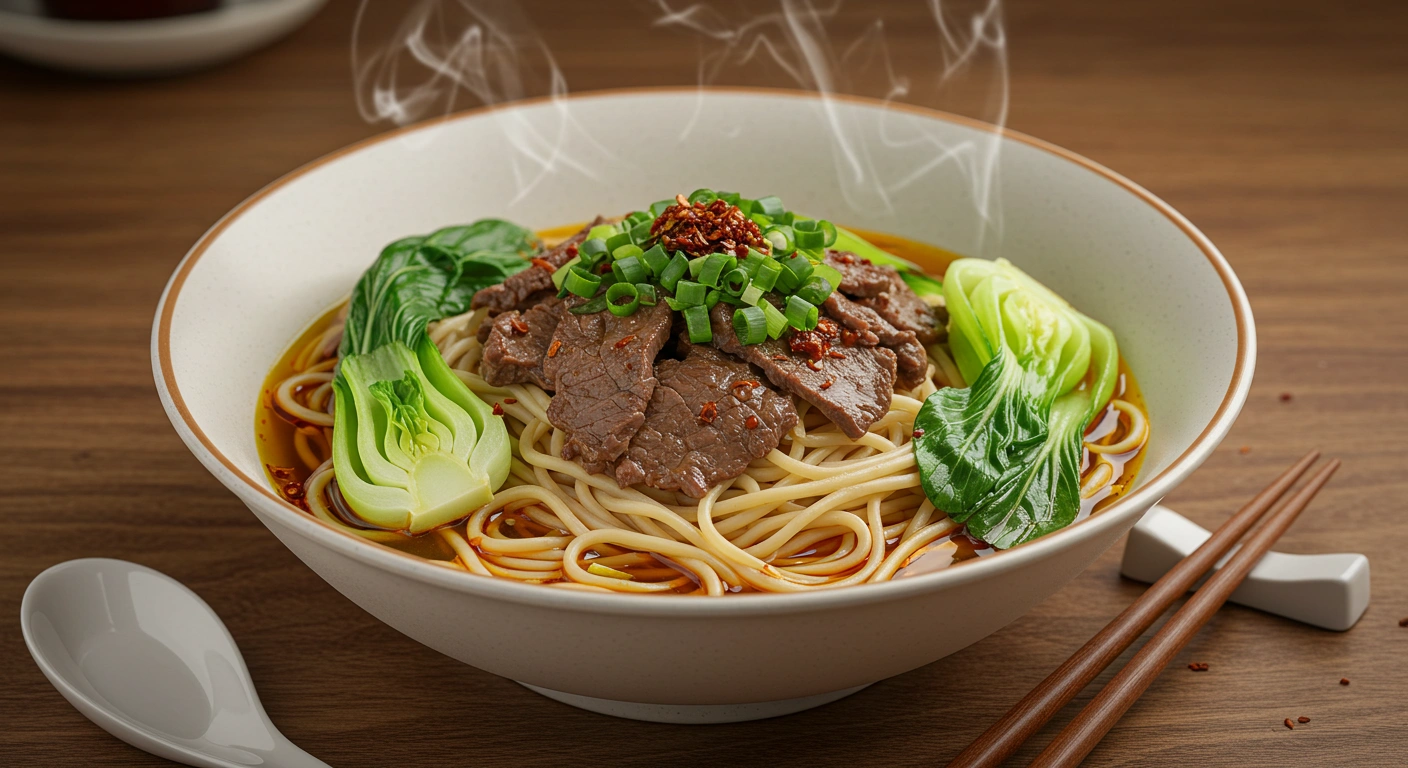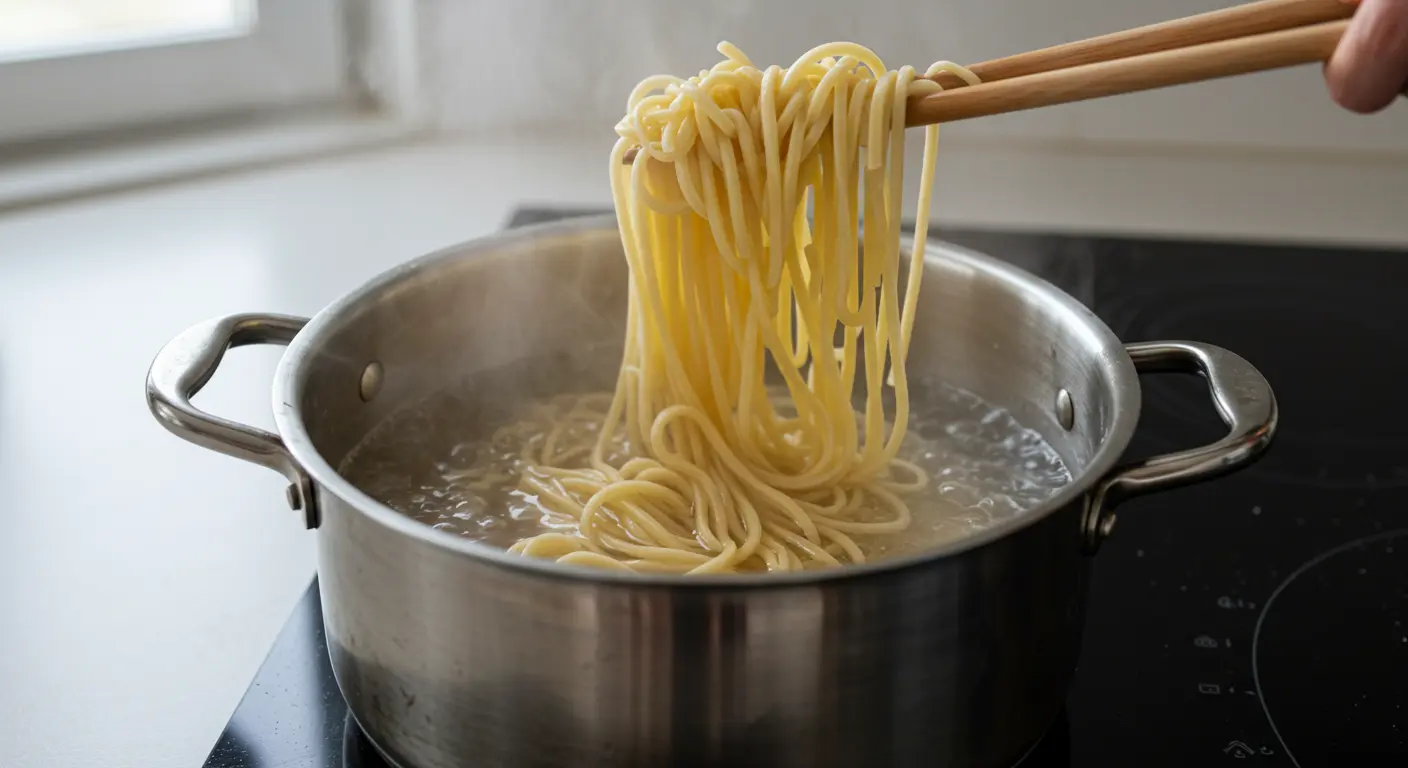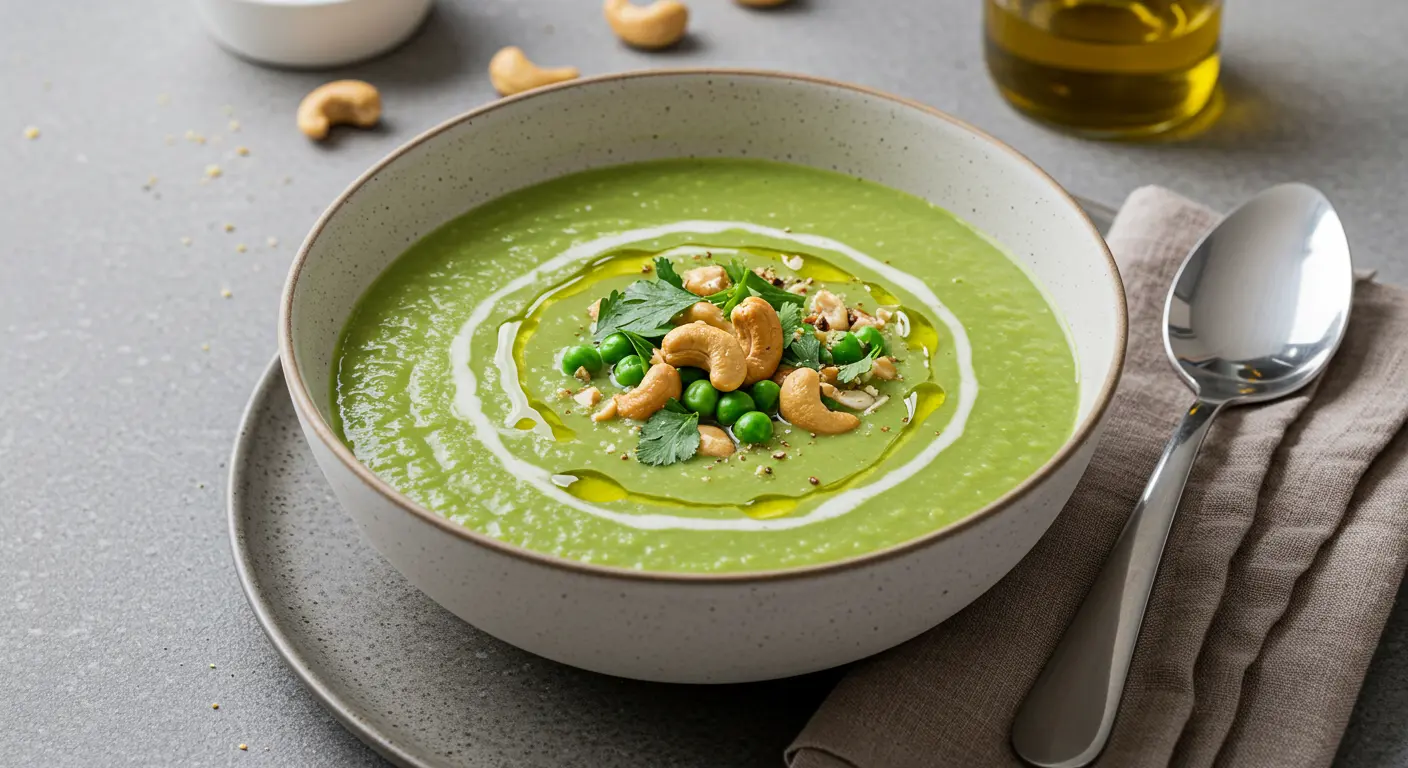Picture this: a steaming bowl of Beef Chongqing Noodle Soup sits before you, its crimson broth shimmering with fiery chili oil, fragrant with numbing Sichuan peppercorns, and brimming with tender beef. The first slurp hits your senses—spicy, savory, and tingling with warmth. This isn’t just a meal; it’s a journey to the heart of Chongqing, where bold flavors reign supreme. Maybe you’ve tasted this dish in a bustling noodle shop or dreamed of recreating its magic at home. Whatever brings you here, you’re about to unlock the secrets of crafting this Sichuan classic in your own kitchen. Ready to dive into the heat and heart of Beef Chongqing Noodle Soup? Let’s get cooking!

What Is Beef Chongqing Noodle Soup?
Beef Chongqing Noodle Soup is a fiery, soul-warming dish hailing from Chongqing, a city in southwest China known for its fearless approach to spice. This isn’t your average noodle soup—it’s a symphony of bold flavors, blending tender beef, chewy wheat noodles, and a broth that’s equal parts spicy, savory, and numbing. The magic comes from Sichuan peppercorns, which leave a tingling sensation on your tongue, paired with chili oil and doubanjiang (a fermented chili bean paste) for that signature kick.
In Chongqing, noodle shops line the streets, each with its own take on this iconic dish. Locals slurp it for breakfast, lunch, or a late-night craving, savoring the way it warms both body and spirit. According to The Food of Sichuan by Fuchsia Dunlop, Beef Chongqing Noodle Soup reflects the region’s love for “mala”—the spicy and numbing flavor profile that defines Sichuan cuisine. Whether you’re new to Sichuan flavors or a seasoned spice lover, this dish promises an unforgettable experience.
Why Make Beef Chongqing Noodle Soup at Home?
You might wonder why bother making Beef Chongqing Noodle Soup when you could order it at a restaurant. The answer? Crafting this dish at home is a game-changer. Not only do you get to savor authentic Sichuan flavors, but you also unlock a world of benefits:
- Control Over Ingredients: Adjust the spice to your liking or swap ingredients for dietary needs—gluten-free noodles, anyone?
- Budget-Friendly: A homemade bowl costs around $5, compared to $15 or more at a restaurant, based on average U.S. dining prices in 2025.
- A Fun Challenge: Impress your friends and family with a dish that looks and tastes like it came from a Chongqing street stall.
Plus, there’s something deeply satisfying about stirring a fragrant broth and watching it come to life. With Sichuan cuisine soaring in popularity—Statista reported a 20% rise in global demand for spicy dishes in 2023—now’s the perfect time to bring this bold recipe to your table.
Essential Ingredients for Authentic Beef Chongqing Noodle Soup
Before you start cooking, let’s gather the essentials. Each ingredient plays a starring role in creating that unmistakable Sichuan flavor. Don’t worry if some sound unfamiliar—most are available at Asian markets or online, and I’ll share substitutions to keep things simple.
Ingredient Table
| Ingredient | Quantity | Purpose | Substitution |
|---|---|---|---|
| Beef (shank or brisket) | 1 lb | Rich, tender protein | lamb shoulder |
| Sichuan peppercorns | 1 tbsp | Numbing, tingling flavor | Black pepper (less authentic) |
| Doubanjiang (chili bean paste) | 2 tbsp | Spicy, savory depth | Gochujang (Korean chili paste) |
| Fresh wheat noodles | 12 oz | Chewy texture | Ramen noodles |
| Chili oil | 3 tbsp | Fiery heat | Homemade chili flakes + oil |
| Chicken or beef stock | 6 cups | Broth base | Store-bought broth |
| Green onions | 2 stalks | Fresh garnish | Chives |
| Bok choy | 2 cups | Crunchy vegetable | Spinach or cabbage |
Sourcing Tips:
- Sichuan peppercorns and doubanjiang are must-haves for authenticity. Check Asian grocery stores.
- If fresh wheat noodles are hard to find, dried ramen noodles work in a pinch—just avoid instant packets with seasoning.
- For chili oil, homemade is best (toast chili flakes in hot oil).
With your ingredients ready, you’re one step closer to a bowl of Sichuan perfection.
Step-by-Step Recipe for Beef Chongqing Noodle Soup
Now comes the fun part: turning those ingredients into a steaming bowl of Beef Chongqing Noodle Soup. Don’t worry if you’re not a pro chef—this recipe is designed for beginners and seasoned cooks alike. Follow these steps, and you’ll have a restaurant-worthy dish in about 2.5 hours.
Recipe Steps
Prepare the Beef:
Start by simmering your beef shank or brisket in a pot of water with a thumb-sized piece of ginger and two star anise pods. Let it bubble gently for 2 hours until the meat is fork-tender. Skim any foam from the surface to keep the broth clear. Once done, remove the beef, let it cool slightly, and slice it into thin, bite-sized pieces. Set aside, and save 1 cup of the cooking liquid for extra flavor.

Make the Broth:
In a large pot, heat 2 tablespoons of vegetable oil over medium heat. Add 2 tablespoons of doubanjiang, 3 minced garlic cloves, and 1 tablespoon of ground Sichuan peppercorns (toast them first for a fragrant boost). Stir for 1–2 minutes until the oil turns red and aromatic. Slowly pour in 6 cups of chicken or beef stock, 2 tablespoons of soy sauce, 3 tablespoons of chili oil, and the reserved beef cooking liquid. Bring to a simmer and let it cook for 20 minutes, stirring occasionally. Taste and adjust with more soy sauce or chili oil if needed.

Cook the Noodles:
While the broth simmers, bring a separate pot of water to a boil. Add 12 ounces of fresh wheat noodles and cook for 3–5 minutes until al dente (check the package for exact timing). Drain and rinse briefly under cold water to prevent sticking. Divide the noodles evenly among 4 wide, shallow bowls.

Assemble the Bowl:
Add a handful of chopped bok choy to each bowl of noodles. Ladle the hot broth over the top, ensuring the bok choy wilts slightly. Arrange the sliced beef on top, then garnish with thinly sliced green onions and a drizzle of extra chili oil for flair. Serve immediately with chopsticks and a spoon for slurping.

Pro Tips for Perfect Noodles
- Toast the Peppercorns: Dry-roast Sichuan peppercorns in a pan for 2 minutes before grinding to unlock their tingling magic.
- Balance the Heat: If you’re spice-shy, start with 1 tablespoon of chili oil and add more to taste.
- Use the Right Bowl: A wide, shallow bowl showcases the broth’s vibrant color and makes slurping easier.
This recipe serves 4, with each bowl delivering a perfect balance of spice, umami, and comfort. According to Serious Eats, the key to Sichuan noodle soups is layering flavors—don’t rush the broth, and you’ll be rewarded.
Common Mistakes to Avoid When Making Beef Chongqing Noodle Soup
Even seasoned cooks can hit a snag when tackling a dish as bold as Beef Chongqing Noodle Soup. Here are pitfalls to watch out for, along with fixes to keep your soup on point:
- Overboiling the Beef: High heat makes the meat tough. Stick to a gentle simmer for tender, melt-in-your-mouth slices.
- Skipping the Toasting Step: Untoasted Sichuan peppercorns lack punch. Take 2 minutes to roast them for maximum flavor.
- Overloading Doubanjiang: Too much chili bean paste can drown out other flavors. Start with 1 tablespoon and taste as you go.
- Soggy Noodles: Cooking noodles too early leads to a mushy texture. Boil them just before assembling to keep them chewy.
- Weak Broth: A bland broth ruins the dish. Simmer it long enough to meld the flavors, and don’t skimp on chili oil or stock quality.
Pairing and Serving Suggestions
Beef Chongqing Noodle Soup is a showstopper on its own, but the right sides and drinks can elevate your meal to new heights. Here’s how to round out your Sichuan feast:
- Side Dishes:
- Pickled mustard greens add a tangy crunch that cuts through the spice.
- Crispy fried wontons bring a satisfying contrast to the broth’s richness.
- A cucumber salad with sesame oil and vinegar refreshes your palate.
- Drinks:
- Jasmine tea, served hot or iced, soothes the heat without overpowering the flavors.
- Serving Ideas:
- Keep extra chili oil and ground Sichuan peppercorns on the table for spice enthusiasts.
- Sprinkle crushed roasted peanuts over the soup for a nutty crunch.
- Serve in preheated bowls to keep the broth piping hot.
These pairings, inspired by Sichuan restaurant menus, make your meal feel like a true Chongqing experience.
FAQs About Beef Chongqing Noodle Soup
Got questions? I’ve got answers. Here are the most common queries about making Beef Chongqing Noodle Soup at home, packed with tips to boost your confidence.
Frequently Asked Questions
What makes Beef Chongqing Noodle Soup different from other noodle soups?
It’s all about the mala—spicy chili oil and numbing Sichuan peppercorns create a tingling, fiery flavor you won’t find in milder soups like pho or ramen.
Can I make Beef Chongqing Noodle Soup vegetarian?
Absolutely! Swap beef for firm tofu or shiitake mushrooms and use vegetable stock. Keep the doubanjiang and chili oil for that authentic kick.
How spicy is Beef Chongqing Noodle Soup?
It’s traditionally a scorcher, but you’re in control. Use less chili oil for a milder version, or go all-in for the full Chongqing experience.
Where can I buy ingredients for Beef Chongqing Noodle Soup?
Asian markets stock Sichuan peppercorns, doubanjiang, and fresh noodles.
These answers tackle the biggest hurdles, ensuring you feel ready to conquer this recipe.
Conclusion: Bring Sichuan to Your Table
Congratulations—you’re now equipped to whip up a steaming bowl of Beef Chongqing Noodle Soup that rivals any Chongqing noodle shop. From simmering a fragrant broth to layering those iconic mala flavors, you’ve learned the art of crafting a dish that’s as bold as it is comforting. This isn’t just cooking; it’s a chance to share warmth, spice, and adventure with those you love.
So, what’s next? Fire up your stove, grab your chopsticks, and let the aromas of Sichuan fill your kitchen. Want to keep the journey going? Try tackling Thai Chicken Noodle Soup for more fiery fun. I’d love to hear how your soup turns out—drop a comment below, share your tweaks, or tag me with a photo of your masterpiece. Happy cooking, and here’s to bold flavors and unforgettable meals!

